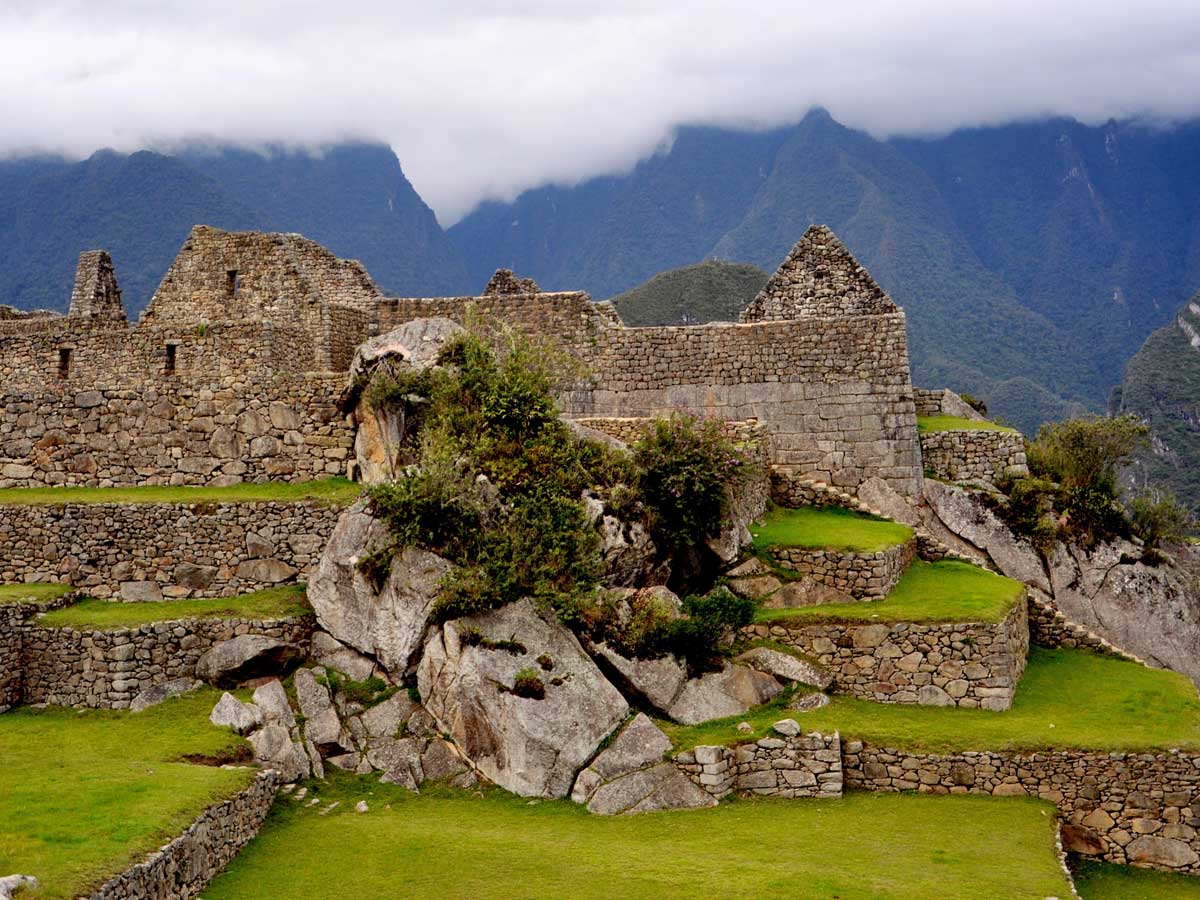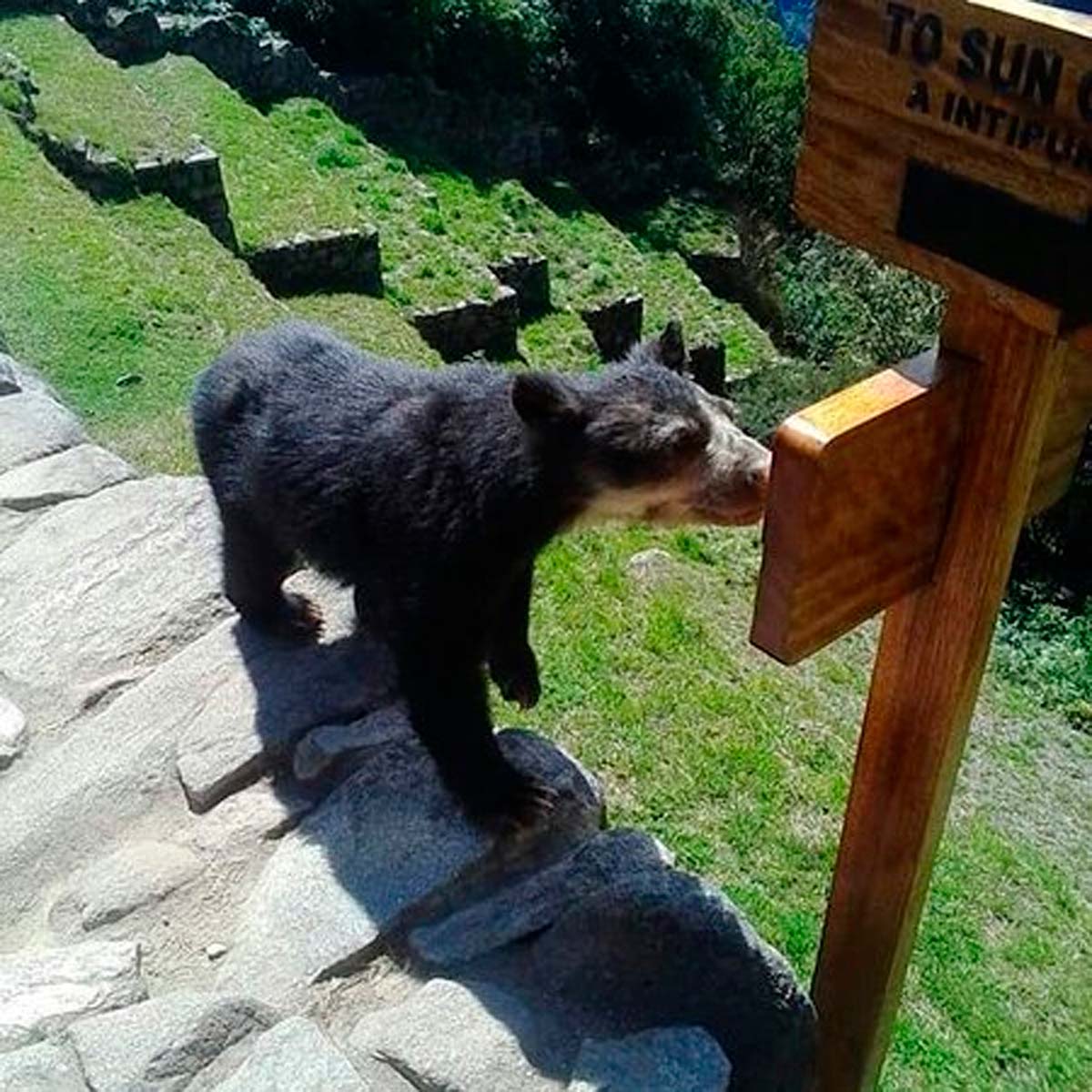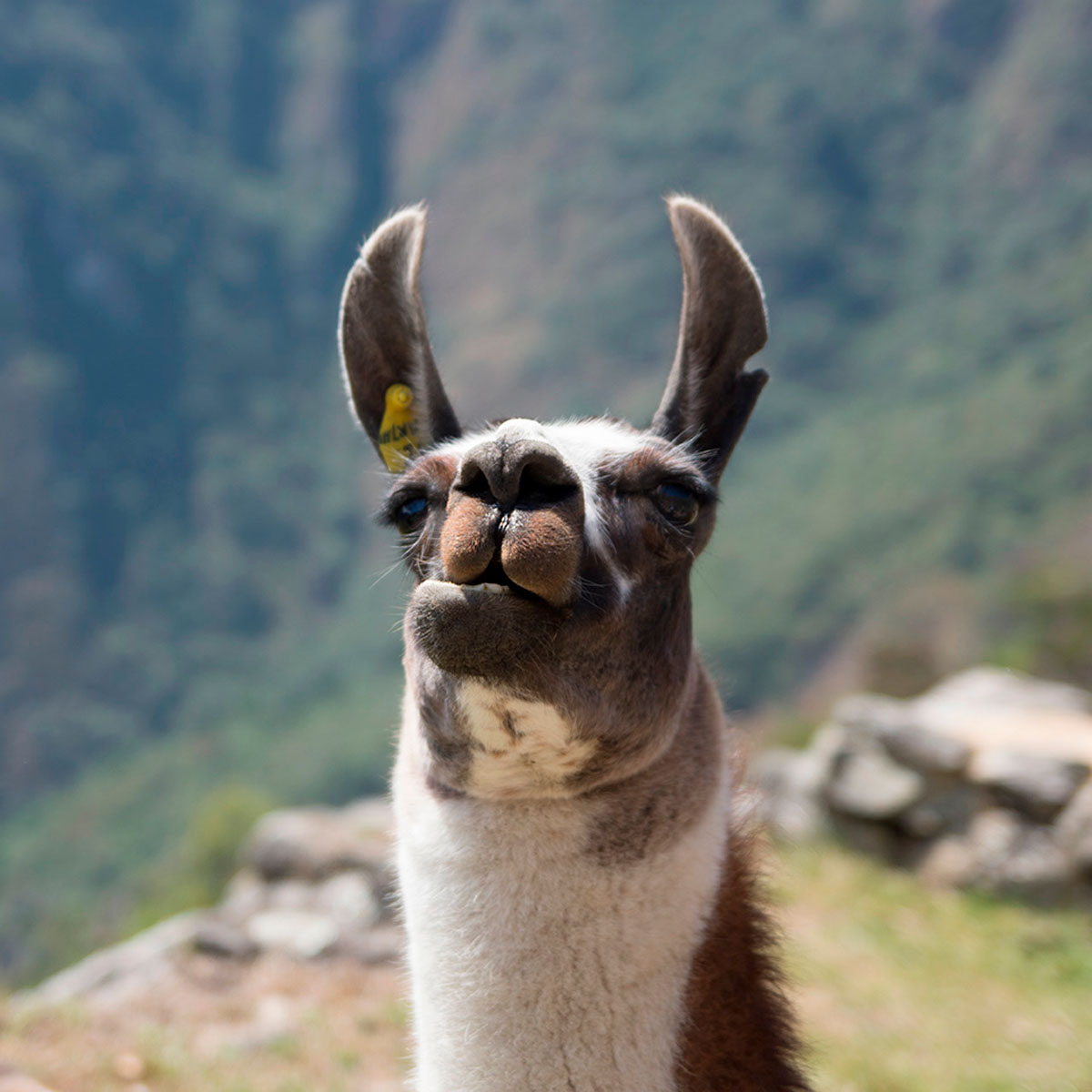

Machu Picchu is an Inca city surrounded by temples, platforms and water channels, built on top of a mountain. Its construction was built with large blocks of stone joined together, without the use of amalgam. At the moment it is considered cultural patrimony of the humanity when being recognized like important political center, religious and administrative of the Incaic time.
This beautiful citadel is located in the district of the same name Machu Picchu in the department of Cusco in the country of Peru located in the province of Urubamba.The Inca ruins of Machu Picchu are located halfway between the peaks of both mountains.
Machu Picchu also is the ending point of an amazing journey, considered one of the 5 best walks in the world: the Machu Picchu Inca Trail. This hiking trail is the most amazing way to have the first sight of the Wonder of the World, as the Incas did almost 600 years ago. Now, we share you some Machu Picchu facts to encourage you to visit ancient Inca citadel so admired by many.
Machu Picchu, the world-renowned archaeological site, owes its fame to Hiram Bingham, an American explorer whose 1911 expedition serendipitously led to its scientific exploration and subsequent global recognition. Interestingly, Bingham's original quest was not to unearth Machu Picchu but to locate Vilcabamba, the last Inca village that had served as a sanctuary from the Spanish conquest in 1572. While traversing the Urubamba Valley, Bingham inquired with local inhabitants about any nearby ancient ruins. It was a native indigenous farmer, Melchor Arteaga, who, conversing in his native tongue, pointed him in the direction of Machu Picchu. The name "Machu Picchu" itself seems to hold its roots in the ancient language, signifying "old mountain" or "old peak," referring to the prominent mountain situated just in front of the citadel.
The mountain immediately behind the citadel, prominently featured in countless iconic postcard photographs, is known as Huayna Picchu, denoting "young mountain". It offers a rewarding ascent of approximately 45 minutes, affording breathtaking vistas and featuring an Inca temple along the way.

When the Spanish first arrived in Peru during the 15th century, they left a trail of destruction in their conquest, often obliterating Inca structures and sacred sites, sometimes replacing them with Catholic churches. Remarkably, one of the key reasons we can now visit and marvel at the remarkably well-preserved archaeological wonder of Machu Picchu is that it remained hidden from the Spanish. This secrecy can be attributed in part to its remote location, but there is also evidence suggesting that as the Incas abandoned the city, they intentionally burned certain structures and pathways to conceal it from prying eyes.
During Hiram Bingham's explorations in the early 1900s, he found Machu Picchu shrouded in dense forest vegetation, which had to be painstakingly cleared. Regrettably, this process resulted in the collapse of some structures. It was during this effort that it was revealed that the over 600 terraces beneath the citadel were ingeniously engineered to prevent it from sliding down the mountain—an extraordinary feat of advanced structural engineering for its era.
As a result, only about 40% of Machu Picchu is currently visible to the naked eye, while the remainder lies concealed beneath protective vegetation to ensure its preservation. Since the initial excavations, there have been limited restorations and reconstruction efforts, but the site remains approximately 75% original, making it one of the most remarkably well-preserved archaeological sites of its time.
One of the lesser-known but fundamental regulations for the preservation of Machu Picchu is the existence of a strict no-fly zone over the entire Historic Sanctuary. This means it is forbidden for any type of aircraft, including planes, helicopters, and drones, to fly over the Inca citadel and its immediate surroundings.
This measure was put in place for several key reasons. Mainly, it seeks to protect the fragile stone structures from the vibrations and noise made by aircraft, which could speed up their decay. It also aims to preserve the peace of the site and protect the local wildlife, especially birds, which could be disturbed by air traffic. Incidents in past decades, where exceptional helicopter landings caused damage to stone elements, reinforced the need for this ban.
It is important to note that this restriction explicitly includes drones. The use of drones by visitors is strictly forbidden inside the entire Historic Sanctuary of Machu Picchu. The surveillance staff is very strict with this rule, and any drone detected will be confiscated.
To ensure the sustainable management of Machu Picchu and minimize the impact of tourism, a series of strict regulations have been put in place that define the visit experience.
The main measures include:
These regulations seek to manage foot traffic, reduce crowding in key spots, and protect the Inca structures. For complete information on the specific guidelines and rules that govern visits to Machu Picchu, consult our Machu Picchu Rules.

Speaking of the lush surroundings, Machu Picchu is ensconced within the cloud forest, often referred to as the high jungle. Visitors are often taken aback by the unexpected beauty of the vibrant, verdant flora that rivals the grandeur of the citadel itself. This cloud forest teems with a rich diversity of plants, insects, and other wildlife, showcasing a striking array of over 300 orchid species.
If you opt to embark on the time-honored pilgrimage to Machu Picchu along the Inca Trail, you will be treated to an even more profound encounter with the region's extraordinary biodiversity. Your journey will lead you through mountain passes, valleys, and a series of distinctive microclimates, offering a firsthand exploration of this natural wonderland. Alternatively, for those who prefer a more accessible route, visitors to the site can effortlessly board a train to Machu Picchutown (Aguas Calientes) and then hop on a bus directly to the citadel, making Machu Picchu a welcoming destination for travelers of all ages and abilities.
The Historic Sanctuary of Machu Picchu is part of the natural habitat of the spectacled bear (Tremarctos ornatus), also known as the Andean bear. This is the only bear species native to South America and is currently classified as vulnerable by the IUCN (International Union for Conservation of Nature), due to habitat loss and poaching.
Although sightings inside the citadel are uncommon, some visitors have reported seeing them in the peripheral areas of the archaeological site, especially on the slopes covered by cloud forest. These sightings usually happen at times with fewer tourists, like late in the afternoon. The spectacled bear's diet includes a variety of plants, with bromeliads, which are abundant in the area, being one of its favorites. It is important to remember that they are wild animals and a safe distance must be kept in case of a chance encounter.
It is very common to find llamas grazing freely inside the citadel of Machu Picchu. Unlike the spectacled bear, llamas are not wildlife native to the site; they are domestic animals that have been introduced to the area. They serve a practical function by helping to keep the vegetation on the terraces short and have become an iconic part of the landscape for visitors.
Llamas were very important to the Inca civilization, being used as pack animals and a source of fiber and meat. Llama bone remains have been found in ceremonial contexts within Machu Picchu, which shows their historical presence at the site during its time of occupation. Although they are generally docile and used to human presence, it is important to treat them with respect and avoid bothering them.
 |  |
The structures of Machu Picchu showcase remarkable stone craftsmanship, with stones that fit seamlessly together, and this precision has endured for over 500 years, achieved without the use of forges, mortar, or adhesive.
Surprisingly, over 50% of Machu Picchu lies beneath the surface, serving as foundations for certain edifices and as intricate water channels and drainage systems designed for rainwater, irrigation, and consumption.
Machu Picchu is typically divided into two distinct zones: the agricultural and urban sectors. It's estimated that slightly more than 1,000 individuals resided within this concealed mountain city.
Machu Picchu was left incomplete and deserted, a factor that safeguarded it from the alterations and destruction imposed by the Spaniards on other Inca cities.
The availability of abundant water sources and a multitude of terraces enabled Machu Picchu to potentially sustain a population of more than 4,000 people, a fourfold increase from its historical inhabitants.
The trek to Machu Picchu is renowned as one of the world's premier treks and undoubtedly one of the most breathtaking ways to approach this iconic site.
A prohibition exists against the airspace over Machu Picchu National Park, yet in 2016, Peruvian President Ollanta Humala defied this restriction by flying over the Inca City in a helicopter.
In the Main Square of Machu Picchu once stood a monolith, but it was relocated twice to create a heliport. The first time was for the Spanish monarchs, and the second for a gathering of Andean Community of Nations leaders.
Regrettably, during the second relocation, the monolith was damaged and subsequently buried near the Main Square.
Machu Picchu has earned a place on the list of 100 historical monuments worldwide at risk.
As the paramount tourist attraction in Peru, Machu Picchu faces ongoing threats from commercial interests advocating for the construction of luxury hotels and tourist-oriented restaurants in close proximity to this iconic wonder.
During your visit to Machu Picchu, you can choose between a variety of tours. These range from a full-day excursion to Inca Trail through the Sacred Valley of the Incas or Machu Picchu tours from Cusco. The multi-day tours can be combined with climbing of the Huayna Picchu mountain or the Rainbow Mountain, a trek through the Andes villages with living traditions. If the classic trail is sold out, the best hiking option is the short Inca Trail, this trail is part of the Inca path. There are also alternative treks to Machu Picchu, such as Salkantay Trek, Lares trek, Inca Quarry or Huchuyqosqo Trek. There are no limits to your thirst for adventure to Machu Picchu!